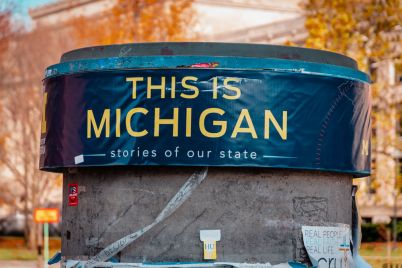
Illustration by Kaitlyn Carr
Xailia Claunch
Editor
As COVID-19 rages on, some of the most pressing issues from before the pandemic are being put on the backburner. But despite the outbreak, WCC’s sustainability council is still at work.
Becky Andrews, recycle operations manager at the college, said the sustainability initiative is spending more time focusing on bigger projects this semester.
“We have a smaller workforce now, and have been dealing with material coming from the various upgrades happening, and design and construction projects on campus such as the current lighting upgrades,” said Andrews. “Classes that are back such as WTMC, nursing, and welding are still producing material for recycling.”
The college sent 52 less tons of garbage to landfills in 2020, which is a 29% reduction in overall waste compared to the previous school year. This is to be expected, according to Andrews, as the college was closed four out of 12 months of the 2020 fiscal year. This temporary improvement may have long term effects on sustainability data and make future comparisons more difficult in following years.
Craig Whipstock, associate vice president of facilities, said his department has taken advantage of the fact that there are fewer people on campus. They now have the opportunity to work on bigger projects that would be more difficult to accomplish during a typical semester.
“We’ve been pretty much back since the end of April, beginning of May,” said Whipstock. “We’ve pulled projects ahead that we would have normally had to do during shutdowns. We did a lot of cement work, which is very hard to do with people running around.”
Without students on campus, the facilities department didn’t need to restrict their work schedule to weekends or off-hours. That saved the college money on cement projects and allowed them to get about 40% more work done.
Another major project was the draining of the Morris-Lawrence building pond, which was originally scheduled for next year.
Additionally, the inside of several buildings also received upgrades.
“We redid the lighting in the library. We’re converting all the lighting over to LED in the LA building.”
The LED lights should lower energy consumption, adding to the sustainability of the campus, Whipstock said.
Prior to the closure, the school estimated that WCC students travel more than 23 million miles and consume almost 1 million gallons of gasoline in a year. This figure was found by taking into account the nearly 10,000 students commuting to and from WCC for one full year.
Although Whipstock doesn’t have the current figure, estimated gas consumption is certainly far lower this semester.
Despite the waste reduction, lower energy consumption and labor efficiency resulting from the closure, some of the precautions necessary to keep students safe from COVID-19 aren’t the most environmentally friendly.
“We’re doing air balancing, which means we’re bringing more fresh air in than what’s normally required,” said Whipstock. “That will have a negative impact this winter because we’re going to have to heat all that air.”
In his eyes, the tradeoff is worth it. As someone who previously worked at a hospital, he says he feels good about the safety measures the school put in place.
“Let’s put it this way: I would send my kid here because I feel that confident,” said Whipstock.
The reduction in energy consumption isn’t unique to the WCC campus. According to April Avigne, energy coordinator for Washtenaw County’s Infrastructure Management department, county operations have seen a decrease in energy, water use, and overall waste.
“The average reduction has been 30-50% for admin, office and court buildings,” said Avigne. “We have also seen a drop in energy and water in our correctional facilities of around 15-18%.”
These lower numbers can be attributed to many county employees working remotely and from at home, as well as less Washtenaw County residents visiting the office, administrative and court buildings.
Avigne says her department, just like the facilities department at WCC, also took advantage of the stay-at-home order to install LED lights.
“Because of the light number of staff and citizens in our building we are taking advantage of this by replacing old lights with LED, adding lighting controls and doing additional preventative maintenance, all of which contributes to reduced energy use and lead to a higher quality work environment.”
Get stories like this delivered to your inbox by signing up for our newsletter, The Loop.

